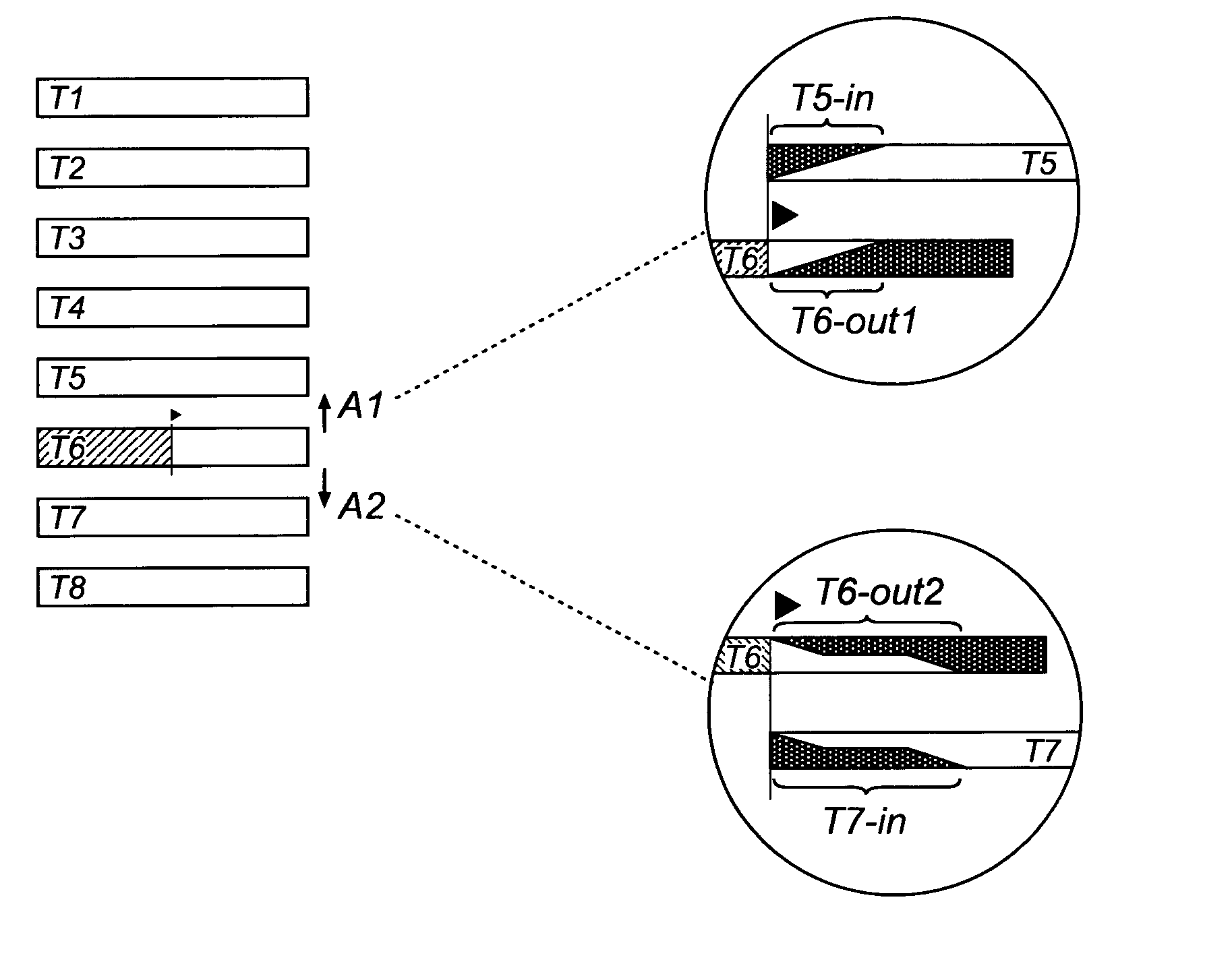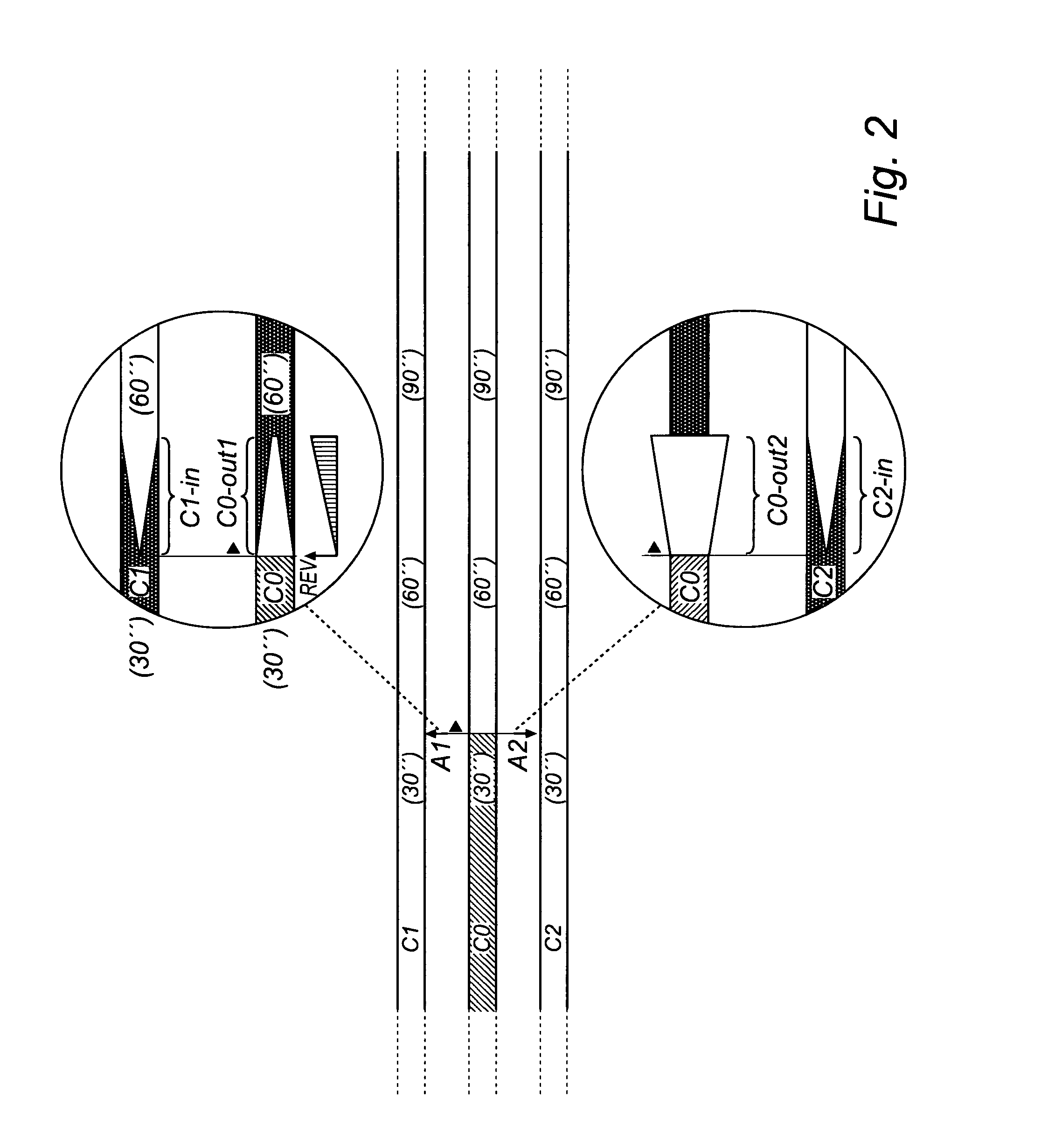Song transition effects for browsing
- Summary
- Abstract
- Description
- Claims
- Application Information
AI Technical Summary
Benefits of technology
Problems solved by technology
Method used
Image
Examples
Embodiment Construction
[0042]FIG. 1 shows audio entries (or tracks) T1-T8 ordered in a database. The database may or may not have a visual interface for displaying the audio entries and their relationships. In this example intended for illustrative purposes, as shown in FIG. 9, the database is located in a database storage means 901, storing either the actual data or pointers (addresses) to a location where they can be accessed. The database storage means 901 is arranged in a audio player 904 together with a decoder 902 for supplying an audio signal or audio signals to a (physical) playback audio source 903 on the basis of one or more of the database entries T1-T8. For the purposes of this description, the same notation will be used for database entries and audio signals. The database 901, decoder 902 and playback source 903 are communicatively coupled. The playback source 903 may accept the audio signal in the format (analogue or digital) in which it is supplied by the decoder 902, or may also include a ...
PUM
 Login to View More
Login to View More Abstract
Description
Claims
Application Information
 Login to View More
Login to View More - R&D
- Intellectual Property
- Life Sciences
- Materials
- Tech Scout
- Unparalleled Data Quality
- Higher Quality Content
- 60% Fewer Hallucinations
Browse by: Latest US Patents, China's latest patents, Technical Efficacy Thesaurus, Application Domain, Technology Topic, Popular Technical Reports.
© 2025 PatSnap. All rights reserved.Legal|Privacy policy|Modern Slavery Act Transparency Statement|Sitemap|About US| Contact US: help@patsnap.com



